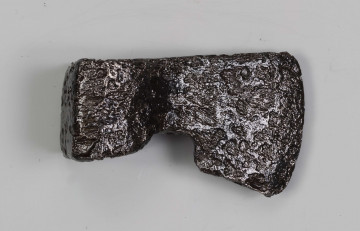
Small axe
476 — 1100
National Museum in Lublin
Part of the collection: Archaeological monuments of the Lublin region
The iron adze was found on the Castle Hill in Lublin during archaeological research conducted in 1969.
It is a massive object with a bar-shaped spindle and a spatula-shaped blade. It was made with the technique of forging from iron billet.
It belongs to a set of tools used for chopping, splitting and ploughing wooden surfaces. The adze was also quite a versatile tool, because it was used for both initial and special processing, when making grooves, mortises, and flails (notches in knotted joints).
The results of archaeological research carried out on Castle Hill, including the discovered tools connected with woodworking, provide evidence that in the 13th and the first half of the 14th century the log construction, also known as the tie beam construction, was most commonly used in wooden buildings. It is associated with Slavic architecture. In this system, houses were built in the early Polish period, both in towns and urban settlements and in villages. Rural houses were usually sunk in the ground - so called dugouts and sunken huts, whereas in the early urban settlements, above-ground buildings dominated.
Author / creator
Dimensions
cały obiekt: height: 19 cm, width: 7,4 cm
Object type
woodworking equipment
Technique
forging
Material
iron
Creation time / dating
Creation / finding place
Owner
The National Museum in Lublin
Identification number
Location / status

476 — 1100
National Museum in Lublin

476 — 1100
National Museum in Lublin

National Museum in Lublin
DISCOVER this TOPIC
Museum of King Jan III's Palace at Wilanów
DISCOVER this PATH
Educational path